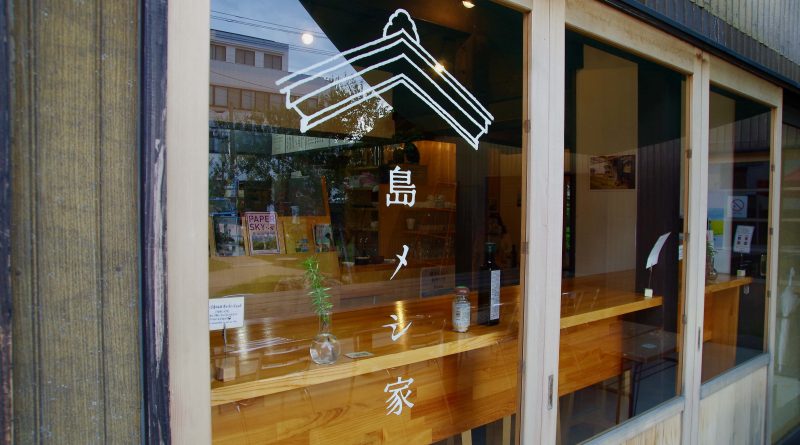Shimameshiya restaurant – a cuisine from local ingredient in Shodoshima
After a 5-minute ride bus from the Tonosho port of Shodoshima to Tonosho-honmachi you will arrive to the Meiro-no-Machi Dofuchi Strait which is recorded on The Guinness Book of World Records as the narrowest strait in the world. Among the many restaurants of the strait, there is a restaurant named Shimameshiya. Their cuisine focuses on using the vegetables and olives grown in Shodoshima to offer delicious meals.
In Shodoshima there is a special type of Sanuki Wagyu, the Olive-fed Wagyu. Here the cattlemen got the idea to mix the olive lees to the feed of their herd. The cattle fed with the olive leftover produced a meat softer and richer than the other Sanuki Wagyu becoming famous through the name Olive-fed Wagyu.
The history of cattle feeding in Kagawa prefecture can be traced to 700 bc. Under the order of Emperor Monmu, farmer raised cattle in Shodoshima either for the government or for farming. In 1882, the Western culture spread to all Japan and farmer started to raise beef for their meat. In the early Taisho period, the beef from Kagawa prefecture used the designation Sanuki Wagyu as its brand name and started to be sold in the main Japanese city.
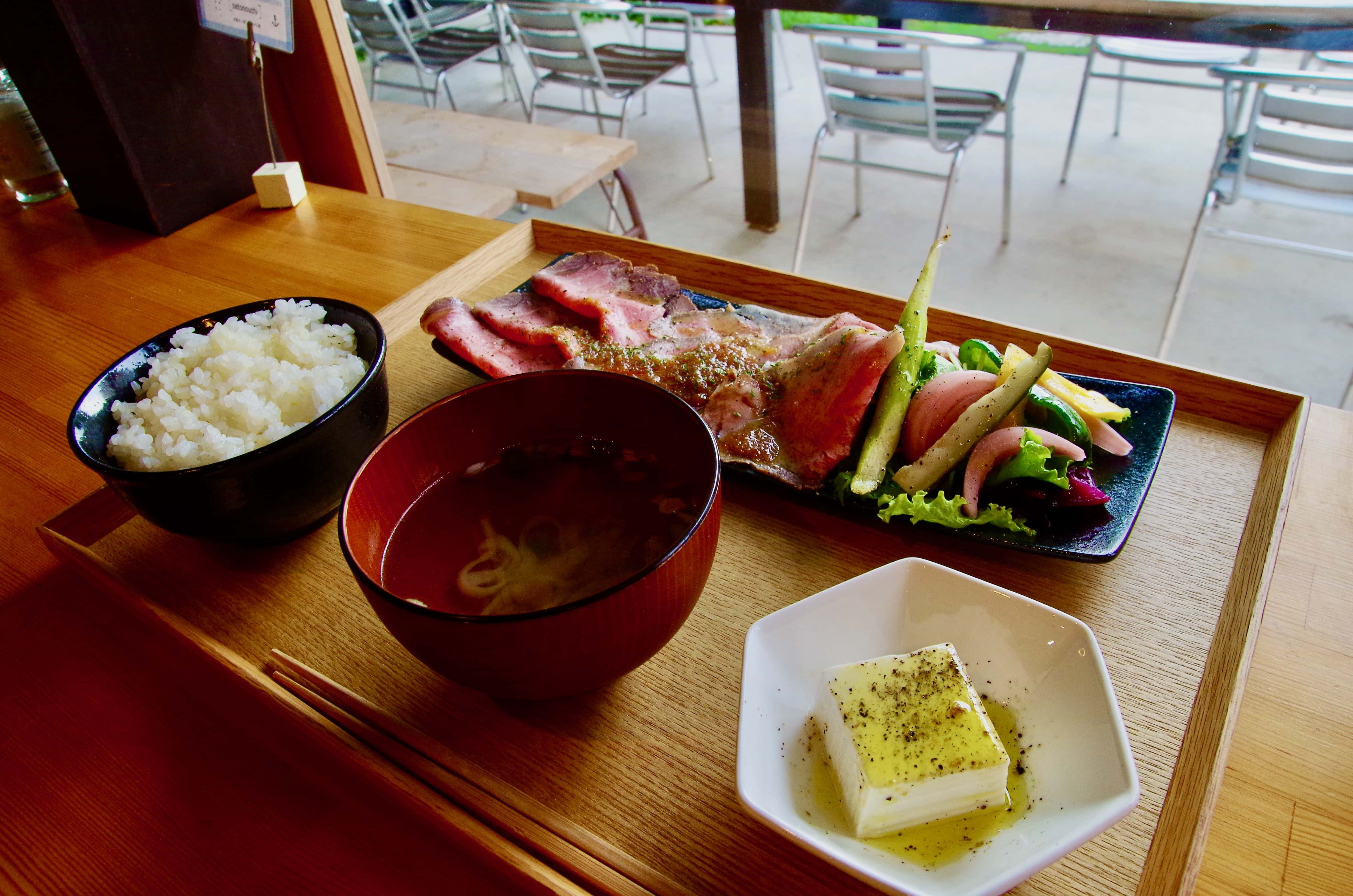
The set meal “island vegetables with roasted Olive-fed beef (島の野菜とオリーブ牛のローストビーフ定食)” uses the three rare parts of cattle including the Round with low fat, the Chuck with a good balance of taste and fat, and the Chuck Flap with rich fat and chewy texture. Trying three different kinds of meats in one meal will help you to savor this wagyu to his best.
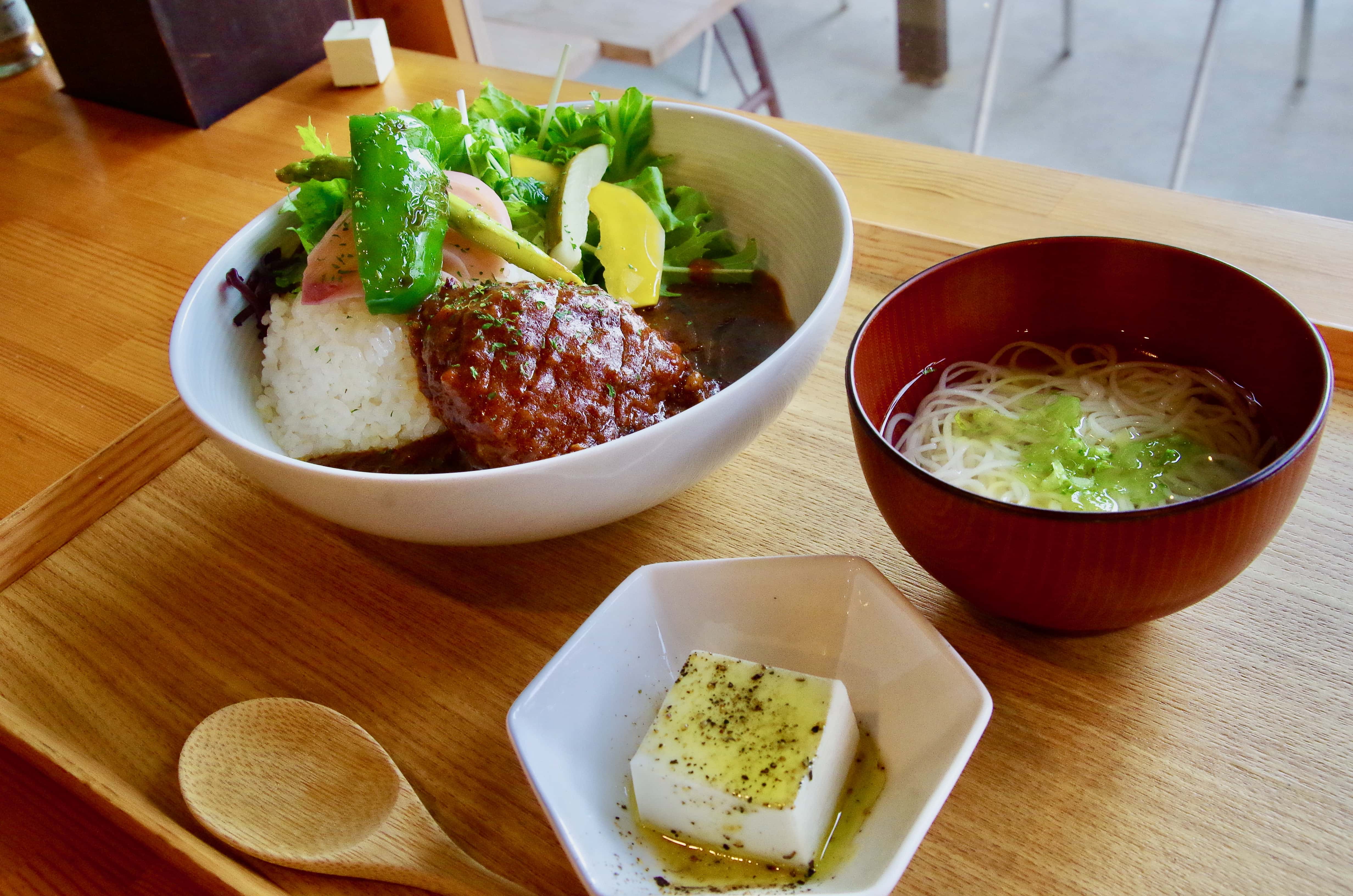
“The hamburger steak of Olive beef and Olive pork (オリーブ牛・オリーブ豚の煮込みハンバーグ)” mix two kinds of meats produced in Shodoshima with a special hamburger sauce using local moromi (unrefined soy sauce) to enrich the taste.
There are two kinds of pork produced in Shodoshima, one is called Olive pork, and the other one is called Olive Dream pork. The two kinds of pigs are fed with the same mix feed made with 8 % wheat variety and 0.5 % of olive lees. The difference lays in the feed duration: the pig used for Olive pork will eat olive-mixed feed for one month before its shipment, while the pig used for Olive Dream pork needs at least two months of feeding. Because of the rich oleic acid and polyphenol of the feed, Olive pork does not stink like normal pork but smells sweet and tasty.
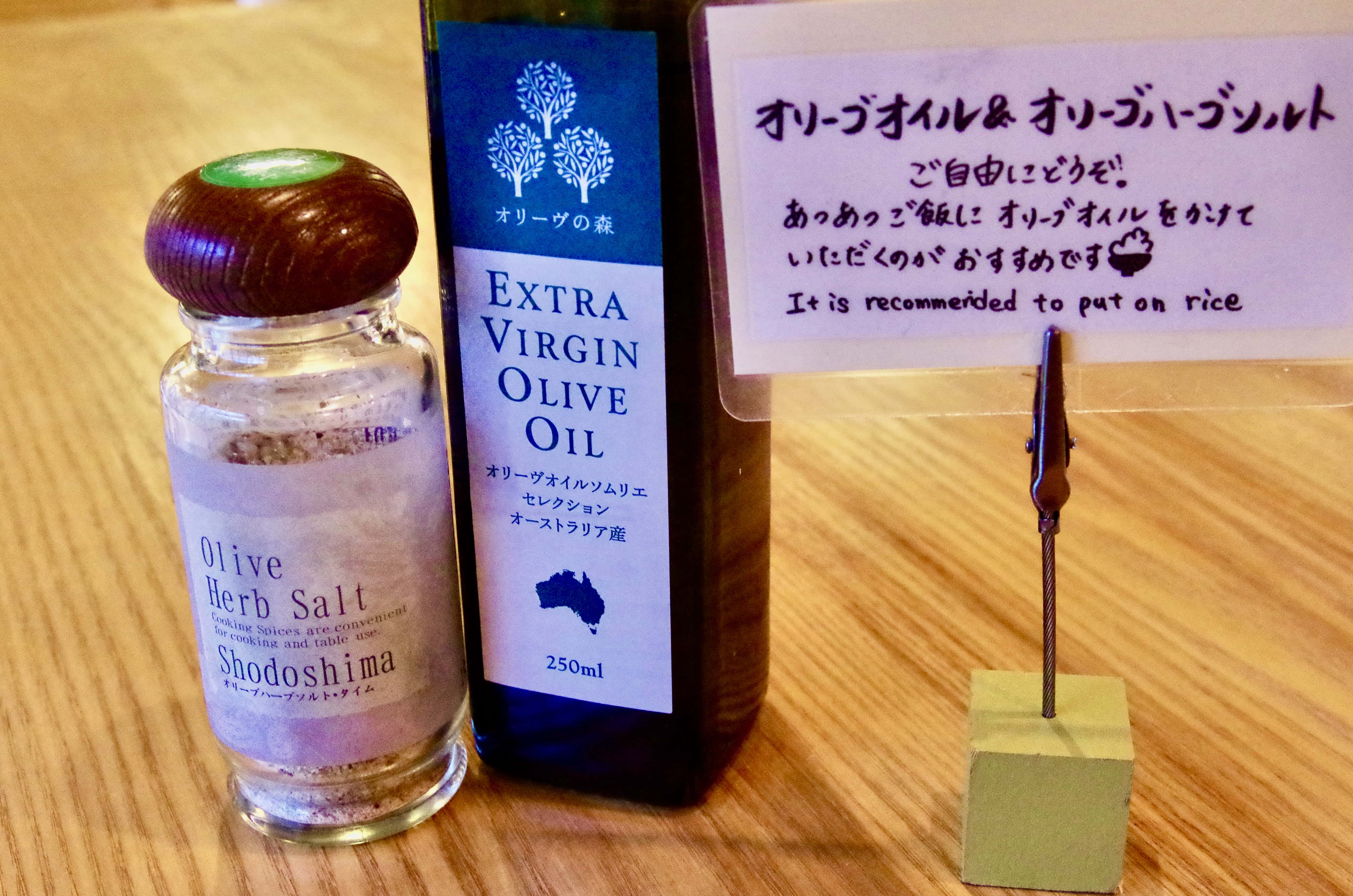
Besides adding olive oil in the sauteed food and salad, you can also try adding it on the rice accompanied by some olive herbal salt. The light fragrance of olive elevating with the steam of the rice will reveal the sweetness of the rice without feeling heavy on the mouth.
After your meal, if you would like to buy some local products of Shodoshima, the Shimanoya (島モノ家) just next door is our recommendation.
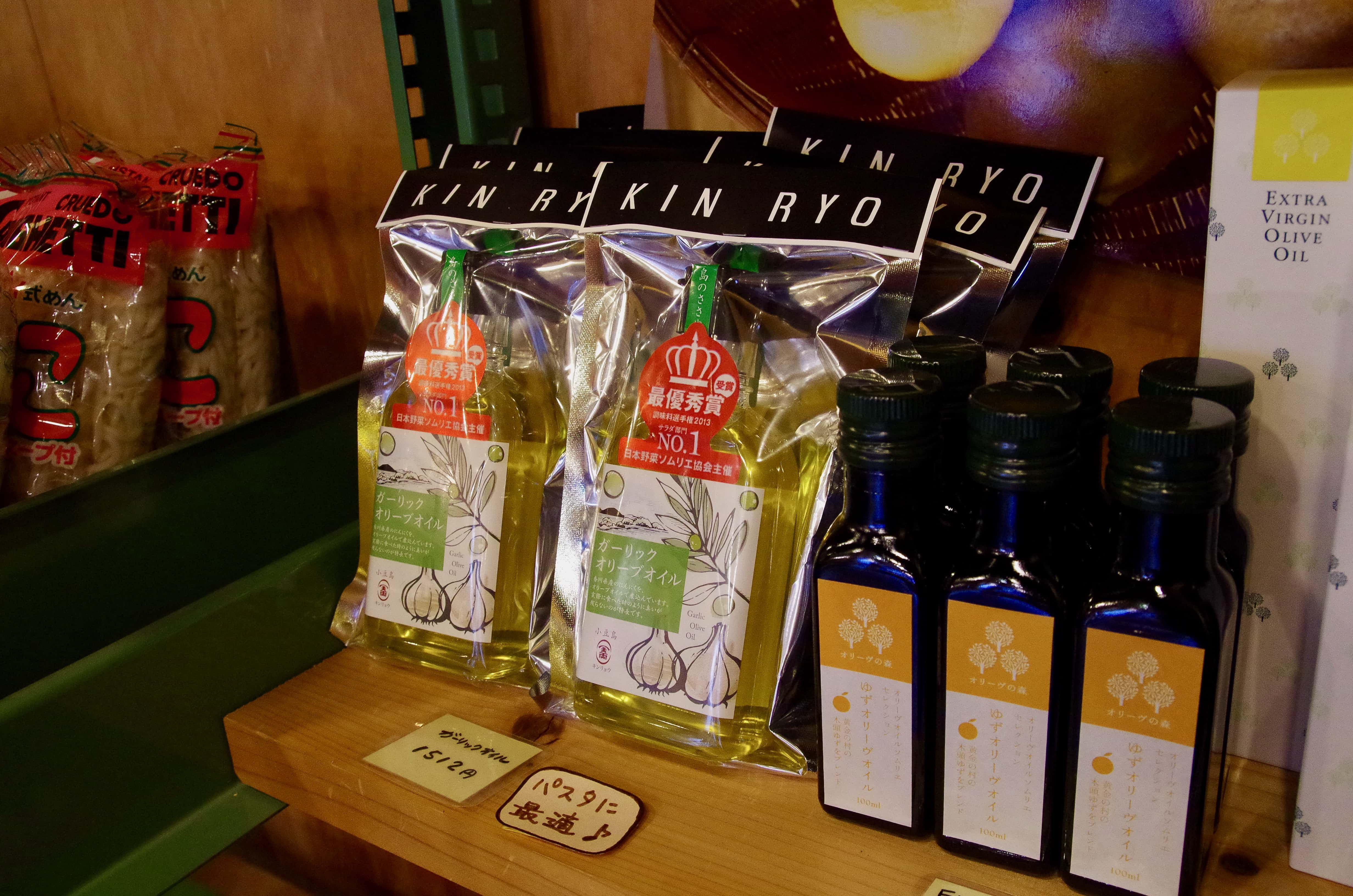
If you mention a special local product of Shodoshima, olive oil will be the first image to come to mind. In Shodoshima, the olive tree is usually planted on the hill making it difficult to harvest by machine so the process is made by hand. Thank to the handpicking all the olive harvested are high quality ones and mature enough to make oil.
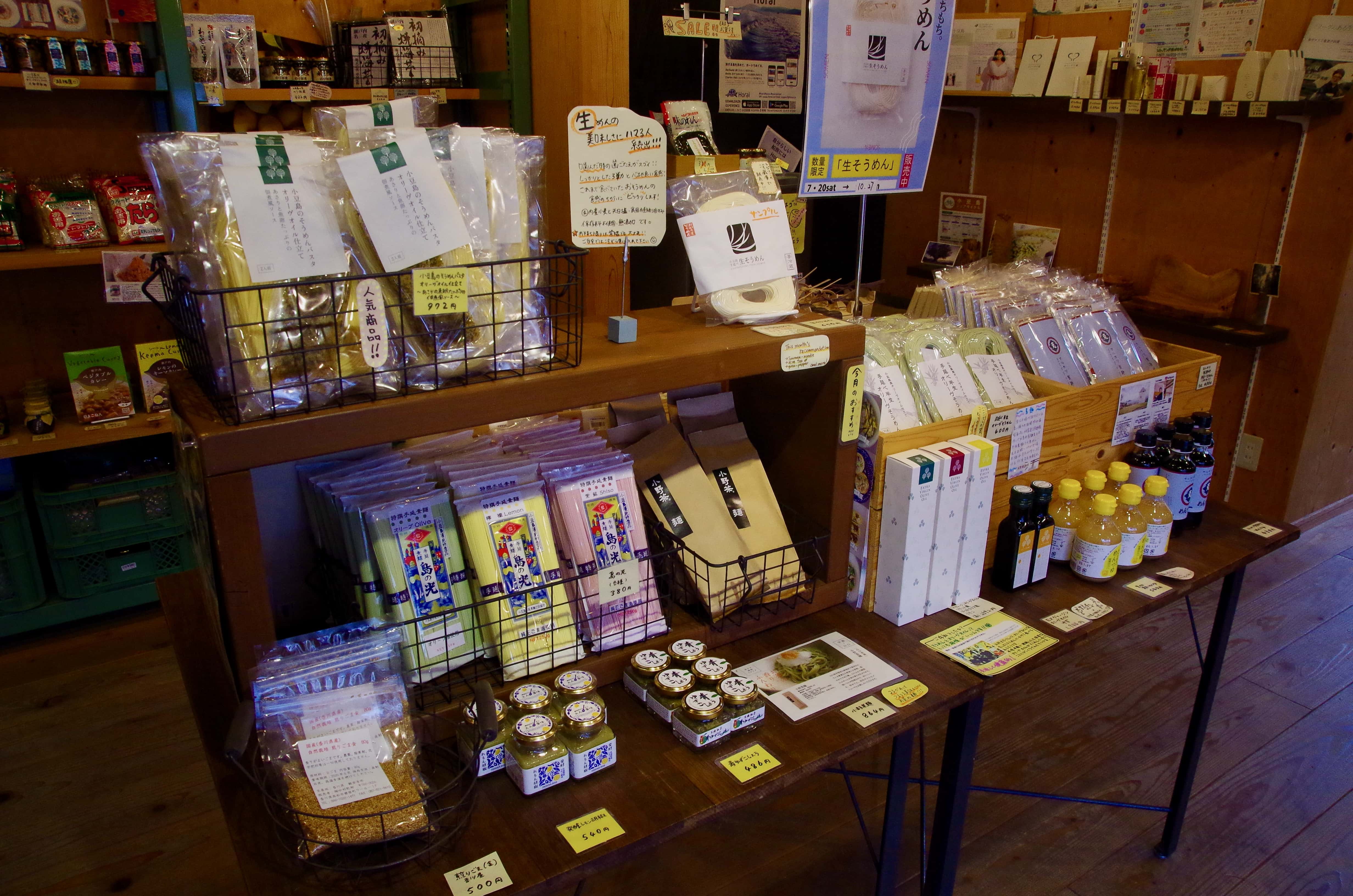
Somen is also a famous local product of Shodoshima. Nowadays, there are about 200 somen-making factories in Shodoshima, however, they do not sell somen as individuals. Each factory will make somen then sell it through the brand named Shimanohikari (島之光) under a biggest business group named Shodoshima Tenobe Somen Cooperative Association (小豆島手延素麺協同組合).
December to March is the production period of Shimanohikara somen. Maybe have you already noticed that there are different colors of paper bands tying the somen. The reason is that the colors represent the different kinds of somen; for example, red means upper grade and black means special grade. The black Shimanohikari is made from December to January with the coldest wind, so it looks glossy and tastes chewier than the red one. The blue Shimanohikari is the new creative soman made from various ingredients to obtain different noodle colors and tastes, including green using olive, yellow using lemon, and pink using perilla.
The part remaining after the dried somen are cut is called hushimen (節麺), and locals use it to cook miso soup or to make salad. It represents how people cherish the ingredients and hope not to waste any part of the somen production.
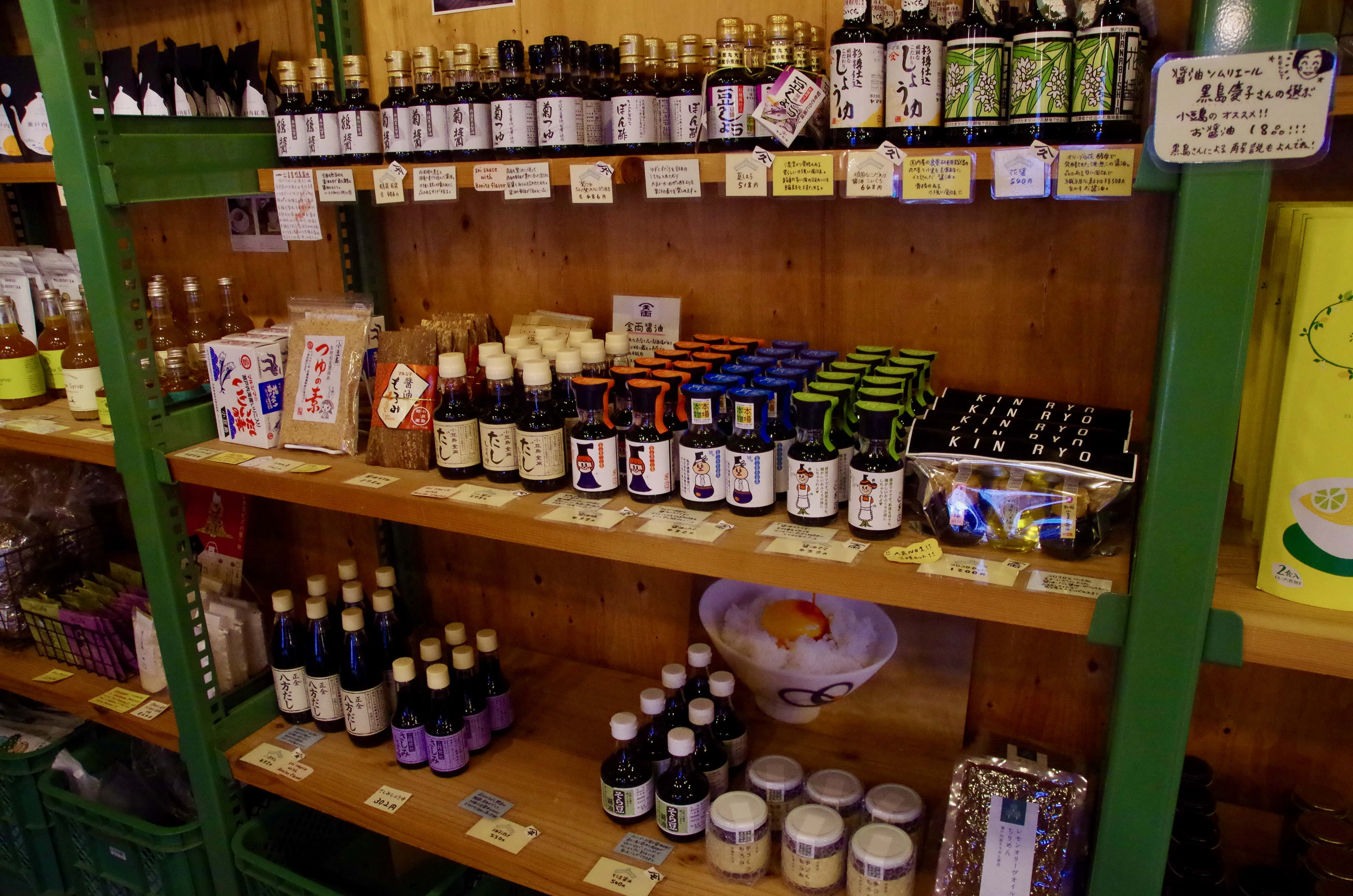
The third special local product of Shodoshima is soy sauce. Kagawa prefecture is the 5th producer of soy sauce in Japan, and half of the quantity is from Shodoshima. The soy sauce’s produce in Shodoshima is the wooden bucket fermenting one. Soy sauce begins from cultivating the aspergillus (kinds of fungi), and the wooden bucket is one of the best environment to grow it, then the soy sauce mature slowly. The soy sauce made through this natural method has a special fragrance and vitality that not appear in the soy sauce made in the iron bucket nowadays.
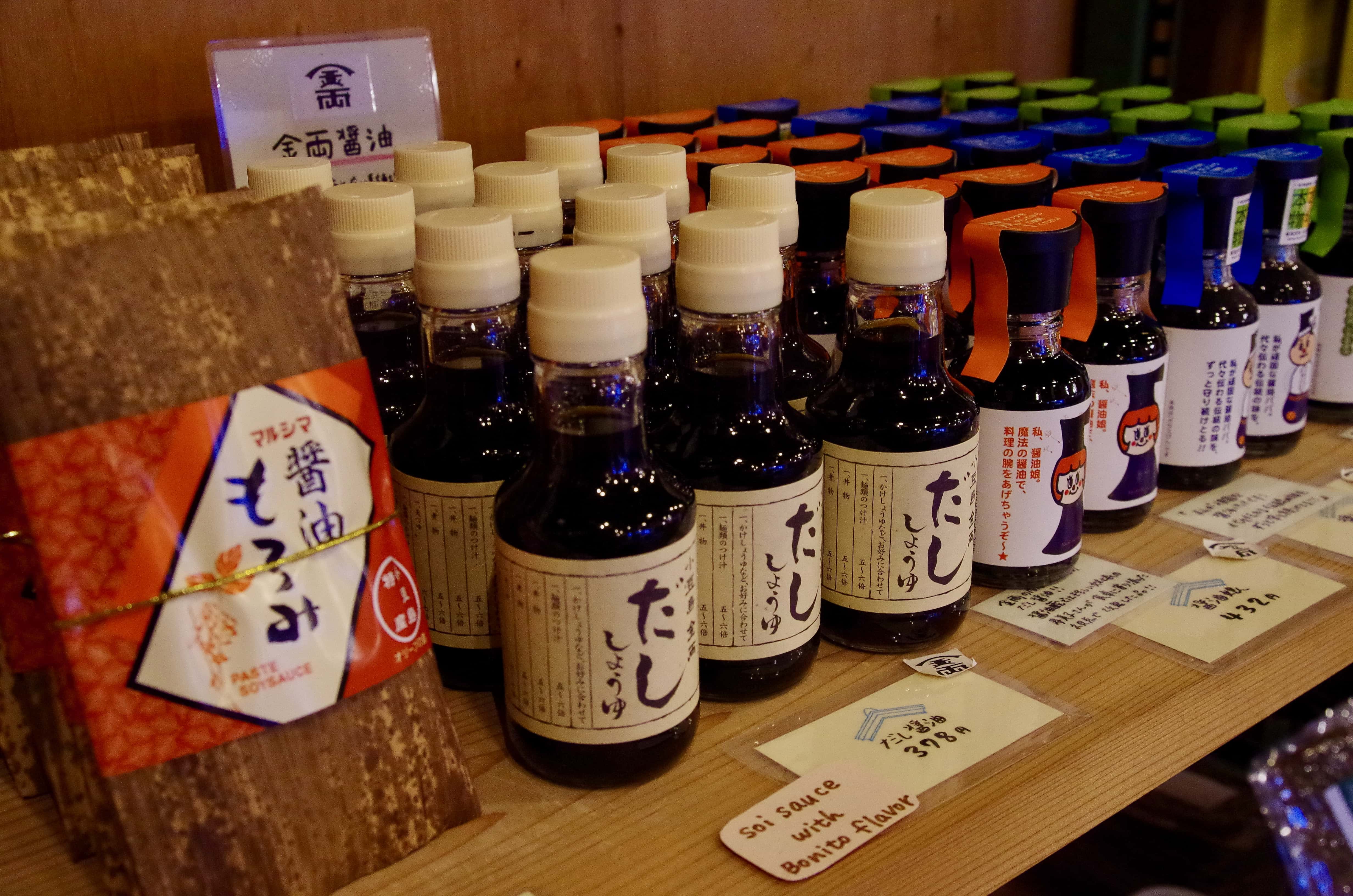
There are only 1 % of Shodoshima’s soy sauce made in wooden bucket distributing in Japan. Therefore, Shimanoya sets a special corner to sell the soy sauce products chosen by the expert Miss Kuroshima Keiko who is called soy sauce sommelier. Next time, if you come to Shodoshima and do not have time to visit soy sauce factories, it is recommended to pick up some soy sauce products here.
INFORMATION
Access: 15-minute walk from Shodoshima Tonosho port.
7-minute walk from Angel Road. 3-minute walk from Dofuchi Strait.
Take the bus line Sakide (坂手線) or South round Fukuda(南廻り福田線) or Nakayama (中山線), North round Fukuda(北廻り福田線) or Shikai (四海線) from Tonosho port to Tonosho Honmachi(土庄本町), and 1-minute walk.
- Address: 〒761-4433 香川県小豆郡土庄町甲398
- Business hours: Shimameshiya (島メシ家) 11:00~14:00 (last order 13:45),
Shimamonoya (島モノ家) 10:00~18:00 - Closed on: Wednesday (open on public holiday)
- TEL:+81-87-962-8500
- WEB: https://www.facebook.com/setonouchi/
- Wi-Fi: N/A
- Language: Japanese
- Credit card: N/A

